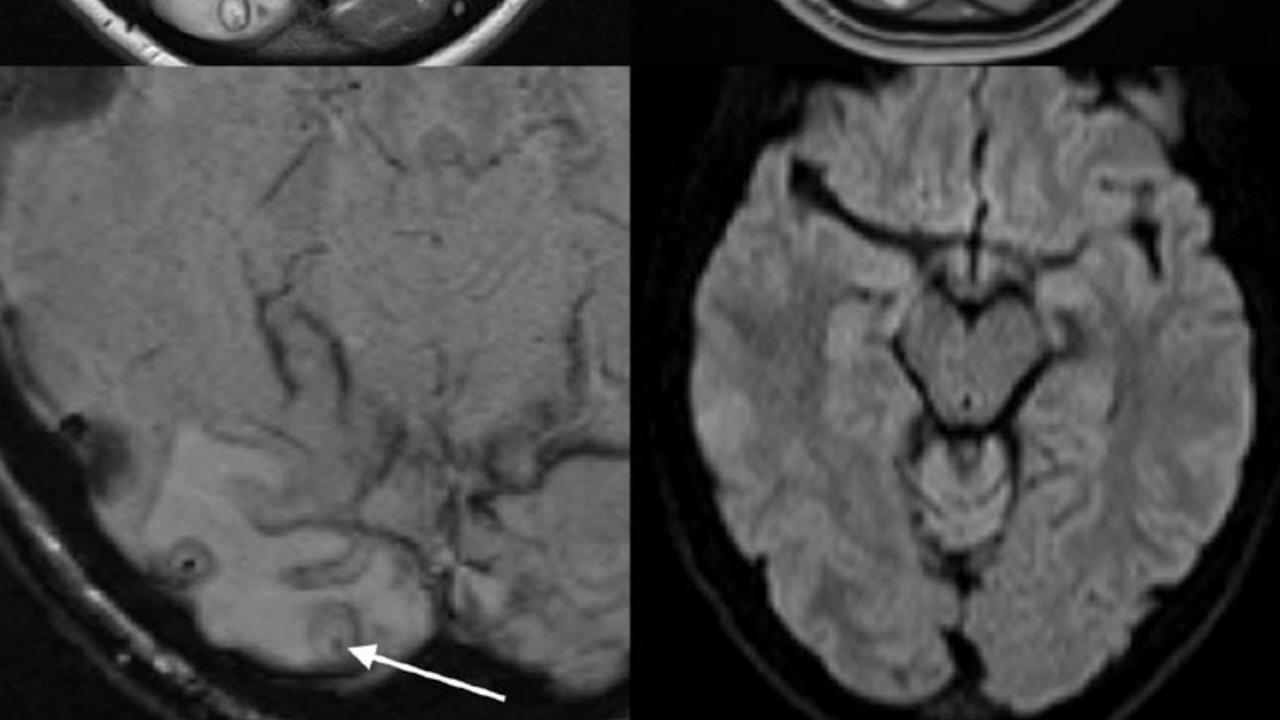Neurocysticercosis: Mystery over woman diagnosed with Australia’s first case of locally acquired tapeworm disease
A Melbourne woman who had a headache for six days has been diagnosed with Australia’s first locally acquired case of neurocysticercosis.
Mystery surrounds how a Melbourne woman who had never travelled overseas was infected in Australia with a parasitic disease spread by a tapeworm found in pigs.
The case has sparked warnings that diseases such as neurocysticercosis may be able to spread to Australia due to increasing international travel.
The tapeworm taenia solium is not commonly found in Australia and those previously diagnosed with the disease neurocysticercosis (NCC) have been either immigrants, or people who have travelled to regions where the disease is more common such as Africa, Asia and Latin America.
The Melbourne woman, 25, who was diagnosed with the disease after a cyst found in her brain was DNA tested, was born in Australia and had never travelled overseas.
According to a case report published in The American Journal of Tropical Medicine and Hygiene the woman had experienced regular headaches two or three times a month with “visual symptoms” since 18 years of age.
These were diagnosed as migraines and were usually fixed by taking paracetamol or metoclopramide.
The woman sought medical treatment after she experienced a mild to moderate headache lasting six to seven days. She also experienced more severe visual symptoms including moments when her vision was blurred.
A magnetic resonance imaging (MRI) scan found a lesion in her brain and she had surgery to remove it.
Once it was removed, doctors were surprised to find that it looked like a cyst. Investigations showed it was not human tissue and was in fact larvae from the parasite.
The diagnosis of neurocysticercosis was made after the tissue underwent DNA testing.
“This is the first recorded autochthonous case of NCC (neurocysticercosis) in Australia,” the case study notes.
RELATED: Man finds tapeworm curled in brain

RELATED: Thai man pulls 9.7m tapeworm from bum
The disease is common in countries where pigs eat faeces from humans infected with the tapeworm.
People generally get the disease after eating eggs from the tapeworm. Larvae emerge from the eggs and travel in the bloodstream from the gut to other organs, where they develop into cysts, mostly in muscles and the central nervous system.
Neurocysticercosis is rarely found in affluent regions, including North America, Central Europe, Japan and Australasia, or in countries where eating pork is discouraged due to religious or social practices.

The Melbourne woman lived with her parents and siblings in an outer metropolitan suburb and worked as a barista.
None of the woman’s family had come into close contact with anyone who had travelled to areas where the tapeworm was common.
Experts noted that the woman’s work as a barista did put her in contact with people from many countries, although this was not different from many others who work in the industry.
“However, it is not surprising that with the high frequency and ease of travel between endemic and non-endemic regions, sporadic infection can occur in people, who would otherwise be considered at no or very low risk of infection with (the tapeworm) T solium,” the case report said.
While researchers could not find a clear source of infection, they suggest the woman somehow consumed eggs from the tapeworm from someone who had travelled to countries where the disease was common.
The genes from the DNA test were linked to Asian strands of the disease. Researchers noted about 6 per cent of residents in the woman’s suburb were born in India and less than 10 per cent were born in Asia.
The case has highlighted the possibility that diseases such as neurocysticercosis could be found in places like Australia where they were not common.
“Although this case is the first documented of Australian locally acquired NCC, it is possible that more cases could ensue,” the report said.
“Clinicians need to be mindful that with the ease and frequency of world travel, diseases such as NCC that are highly endemic in many parts of the world pose a risk to inhabitants of countries with low endemicity.”




